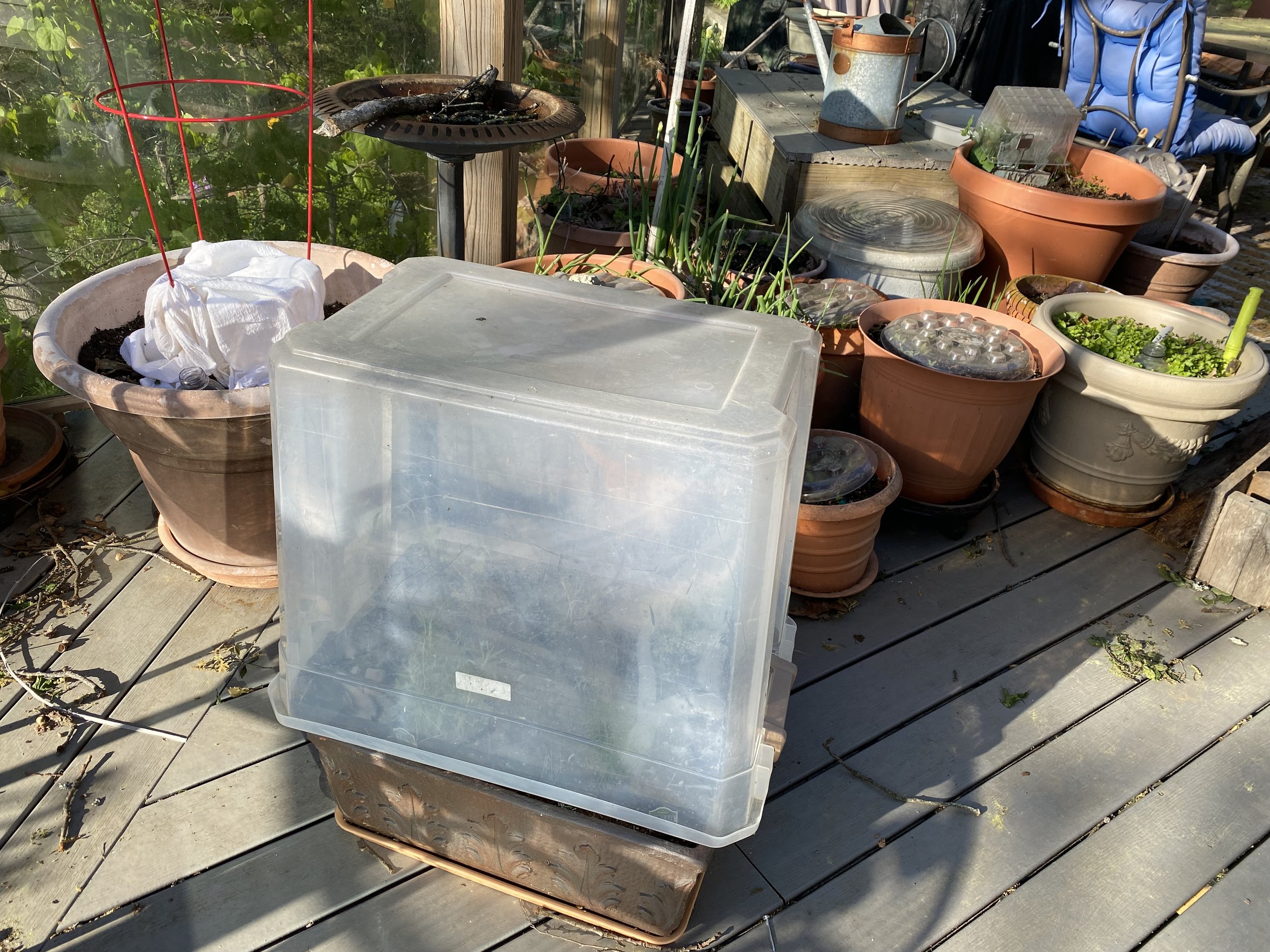Zippy Zinnias
/A bouquet of last fall’s zinnias brightening my kitchen. (Photo by Charlotte Ekker Wiggins)
Zippy Zinnias
If you are just starting to garden and putting in some vegetables, don’t forget these easy to grow flowers, zinnias. Zinnias are an excellent pollinator magnet, bringing in bees to find your vegetables and increasing your yield.
You will find zinnias in a variety of sizes and colors where you find most seed packets. I like the miniature ones for pot gardens and the single taller ones for regular garden spots. Pick the ones that are single, those are the ones that will attract bees.
Zinnias are native to Mexico and now cover a region stretching from the Southwestern United States to South America.
Zinnias were named after the German Botanist Johann Zinn who first discovered them in Mexico and described the plants as being small and weedy. Zinnias are in the Asteraceae plant family which is referred to as the daisy or sunflower family.
They were brought to Europe in the 1750s and have since been bred and cultivated to include a vast palate of bloom types and colors. The earliest zinnia cultivars were reintroduced to the United States in the 1790s with double flower forms appearing in the mid-1800s. There was a renewed interest in zinnias during the 1920s when the first dahlia-flowered cultivars ‘Giant Dahlia’ and ‘California Giant’ were introduced. These cultivars have large, flat-flower heads and come in a multitude of colors.
Zinnias as they grow in a garden. (Photo by Charlotte Ekker Wiggins)
There are single, semi-double, or double flower forms. Single-flowered zinnias are the ones to select if you’re trying to attract pollinators to your garden; the central flower is visible and produces viable nectar and pollen for visiting bees and butterflies.
Semi-double zinnias have several rows of petals with the central flower barely visible.
Double-flowered zinnias have been bred to where all of the visible floral structure produces petals. These can create quite the show in the landscape with the amount of color that is packed onto one stem.
There are several other types including beehive, button, and cactus type zinnias. The most common species grown are Zinnia elegans and Zinnia angustifolia. Zinnia elegans is grown primarily for cut flowers and can grow up to four feet tall and have single or double flowers in the colors of salmon, gold, yellow, white, red, rose, cherry, pink, lavender, purple, orange, and light green. These flowers can be solid or multicolored and range in size from one to seven inches in diameter. Common cultivars of this species include ‘State Fair’, ‘Lilliput’, and ‘Magellan’. Zinnia angustifolia has small, single, golden-orange flowers and have narrower foliage than Z. elegans.
The Lilliput cultivars are excellent for pot gardens and borders. The California Giants and Cactus will grow in most soils and bring a spot of color to any garden spot.
Once they finish the growing season, they may self-seed if the winter is mild. The seeds can also be collected and dried for sowing again the following year.
Zinnia seeds shared with my beginning beekeeping students last winter. (Photo by Charlotte Ekker Wiggins)
If you plant only one flower this year, plant zinnias. They are very easy to grow and will make you want to plant more!
Charlotte














